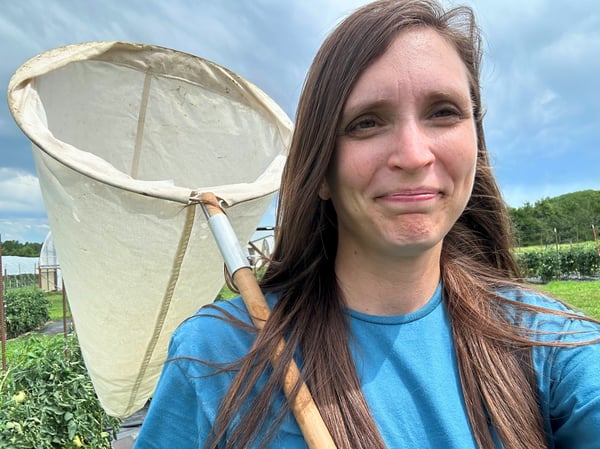
Majid Jaberi-Douraki, Ph.D., is an associate professor of mathematics and data science at K-State Olathe and the director of 1Data.
Jaberi-Douraki's research focuses on computational and quantitative modeling, elements of statistical and machine learning and artificial intelligence, as well as the development of predictive models in healthcare. He also conducts research in the areas of modeling biological and epidemiological sciences and dynamical systems.
We sat down with Jaberi-Douraki to talk more about some of the things 1Data is doing — and to learn more about how students can pursue careers in data right here at K-State Olathe.
Q: In a sentence or two, what is 1Data?
A: 1Data is an innovative initiative that transcends boundaries, gathering diverse human and animal datasets to enhance resources and care. Inspired by the idea of leveraging data to benefit both humans and animals, 1Data initially focused on veterinary data, expanding to include richer sources like food animal and companion animal data. This program now encompasses human data as well, enabling comprehensive analysis. By organizing and interpreting scattered data, 1Data empowers us to answer vital questions about treatment response and offers valuable insights for personalized care across species.
I was inspired to create something when I saw my neighbor holding his dog in the yard one day. It was a cute, fluffy dog, but my neighbor mentioned that it was obese. That raised a question for me: How can we tap into human data to explore the potential application of the same medications to help animals? This made me think that there could be a way for us to extrapolate the data we had to help both humans and animals.
Through our program, we possess the capability to delve into the data and provide insights into queries related to individual responses, or lack thereof, to specific courses of cancer treatment. For example, I might be able to identify different treatment regimens that have demonstrated historical effectiveness, specifically among certain groups of patients.
The landscape of data is akin to a room strewn with toys, scattered in every direction. Similar to how children intuitively arrange their toys with specific order and associations, finding clarity in their arrangement, we follow a similar process with data. Our role is to organize and structure the data in a way that lends coherence, making connections and associations between different elements, ultimately rendering it meaningful and understandable.
Q: What are some of the projects you’re working on right now?
A: We’re currently working on a number of different projects right now.
One of our endeavors revolves around animal tracking. We’re in the process of developing a model that can track animals with a specific goal in mind. For example, how much intake does a specific animal have? What are its spatial movements? By doing so, we can evaluate whether an animal has comorbidities. This methodology proves particularly beneficial in identifying changes in an animal's trajectory that might indicate potential health issues. In fact, we found that our method can identify potential problems up to two weeks before they become noticeable to a human observer.
Another project involves automating the collection of data. Historically, data collection was a manual task requiring a substantial workforce. You’d have to have a large staff and sometimes sorting the data could be difficult. One person might be interested in one part of the data, while another might be interested in a different part. This inevitably results in incomplete data sets. But here at K-State, we are crafting a web crawler capable of browsing and indexing the internet and getting that information. It will collect all of the published information, extract the data and neatly arrange it into a spreadsheet — all done efficiently by computers.
Finally, we’re also working on a project related to multiple myeloma. This project explores and analyzes the adverse effects of drugs used to treat patients with multiple myeloma, a form of liquid cancer. From this project, we’ve learned that certain adverse drug events are more prevalent in specific regions. We’re also able to identify which medications may work best for specific patients based on their age, gender, ethnicity and medical history. You can learn more about this project here.
Q: Who should pursue a career in research and data?
When you think about data, I’m not putting data into just one bucket. We’re living in the world of data and the concept of data defies categorization. A huge volume of data is continuously being put together. If you think about online retailers, for example, their trucks are moving around. They need to find the most optimal way of transferring their shipments, so they need to compile data to get that information.
However, the scope of human and animal health data extends far beyond this.
Another example is in the realm of business or industry, a comprehensive understanding of data analysis is an invaluable asset. Armed with this skill, you’ll be able to offer more insights and contributions when compared with your colleagues. You’ll have a better skill set and stronger expertise.
Any field that works with data, including K-State Olathe’s research on urban food systems and agriculture, needs people who can understand, visualize and interpret that data. Data doesn’t have just one aspect. Data is a multifaceted entity, possessing dimensions that require examinations from different angles.
To navigate the workforce and excel in data-related roles, one of the most important skills is the ability to effectively communicate with computers. Being adept at conveying instructions like “analyze the data in this way,” to a computer is critical. This proficiency in computer interaction and data analysis empowers you to unravel valuable insights from the complexities of data.
Majid Jaberi-Douraki, Ph.D., is an associate professor of mathematics and data science. He also is an affiliated researcher with the Johnson Cancer Research Center at Kansas State University. Learn more.
Learn more about 1Data and animal health
What can we learn from animals to help humans — and vice versa? Working together across species and organizations to improve human and animal health will help enhance research and ultimately improve the lives of all species.


